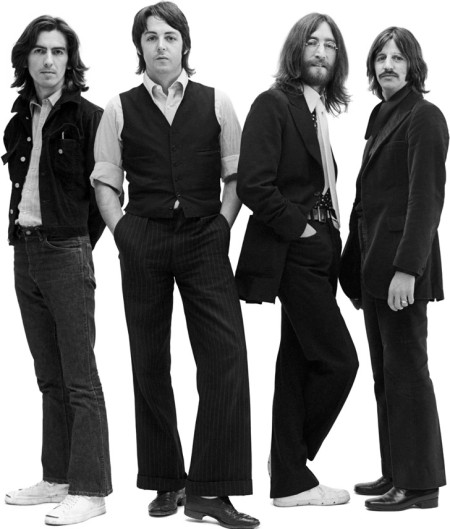Miami Symphony’s Beatles tribute proves mostly fab

The Beatles were feted in a musical tribute by the Miami Symphony Orchestra Sunday night at the Arsht Center.
In February, 1964 the Beatles arrived in America. An appearance on the Ed Sullivan Show was televised live from the Deauville Beach Club in Miami Beach and Beatlemania immediately swept the nation.
The Miami Symphony Orchestra celebrated the fiftieth anniversary of the Beatles’ arrival in Miami on Sunday night before a packed house at the Arsht Center.
The Fab Four’s television appearances changed pop music and the cultural milieu in profound ways. It quickly became evident that the four Englishmen were more than just a trendy novelty act. They were terrific song writers, particularly the team of John Lennon and Paul McCartney. The Beatles mixed the American rock n’roll of Elvis Presley and his African-American predecessors with elements of the European chanson and ballad.
Translating the Beatles’ unique sound to the realm of the symphony orchestra has always been problematical. The late Richard Hayman made a series of orchestral versions of Beatles’ hits for the Boston Pops that reduced the band’s songs to vanilla elevator music.
Miami Symphony music director Eduardo Marturet avoided the pitfalls for the most part by playing and commissioning works based on the Fab Four’s tunes rather than direct orchestral translations.
Samuel Hyken’s The Beatles’ Guide to the Orchestra came closest to being a medley but Hyken, the orchestra’s principal trumpet, devised a narrated display of individual orchestral choirs and instruments in the manner of Britten’s Young Person’s Guide to the Orchestra. Hyken has a real flair for writing light music and his pastiche features such comic touches as the solo tuba growling When I’m 64. Like Britten, Hyken brings the entire orchestra together for a grand fugal finale (on Hey Jude.) Juan Pablo Galavis, a contestant on the television reality series The Bachelor, was the sonorous narrator.
Peter Breiner’s Beatles Go Baroque is a violin concerto in the style of Vivaldi. Breiner is an old hand at this sort of cross-genre fusion and he skillfully includes a keyboard continuo in true Baroque fashion. Concertmaster Daniel Andai was the alternately suave-toned and jazzy soloist. The piece was great fun.
The Uraguayan-born, Paris-based composer Florencia Di Concilio set Golden Slumbers rather heavy-handedly in the romantic style of Rachmaninoff. Ciro Fodere provided big-boned pianism backed by lush strings. American Idol winner Ruben Studdard proved a hip version of a crooner in the young Sinatra-Johnny Mathis manner with a heartfelt Imagine and somewhat understated The Long and Winding Road, one of McCartney’s most thoughtful creations. Alejandro Campos was the deft pianist and orchestrator with a swinging beat.
Marturet’s own Variations on With a Little Help from My Friends was, unfortunately, amplified at ear-splitting volume. The score is somewhat overstuffed and would benefit from pruning but it does not lack wit or imagination. Marturet offers a neo-classical wind band riff, a clarinet waltz, and even works in the march from the finale of Beethoven’s Ninth Symphony set against the Beatles’ song. Marturet’s varied palette was topped by a belted version of the song by thirteen-year-old Haven Star Ross and the Dean Anderson Ensemble.
Co- sponsored by the Make Your Own Peace Foundation, the generous two-hour-plus-sans-intermission program concluded with Ross, Studdard and the choir singing Give Peace a Chance, Lennon’s 1969 anti-Vietnam War anthem, in a mixture of soul and rap styles—proof that the Beatles’ work serves all musical seasons. Videos of the Beatles’ arrival in Miami and flower designs accompanied the music.
The Miami Symphony Orchestra’s season continues with “Ocean Drive in Vienna” featuring the premiere of Concertino for Toy Piano by Sam Hyken with soloist Julia Bueno 6 p.m. January 18, 2015 at the Arshi Center in Miami. themiso.org; 305-275-5666.
Posted in Uncategorized
Leave a Comment
Tue Nov 18, 2014
at 10:22 am
No Comments
